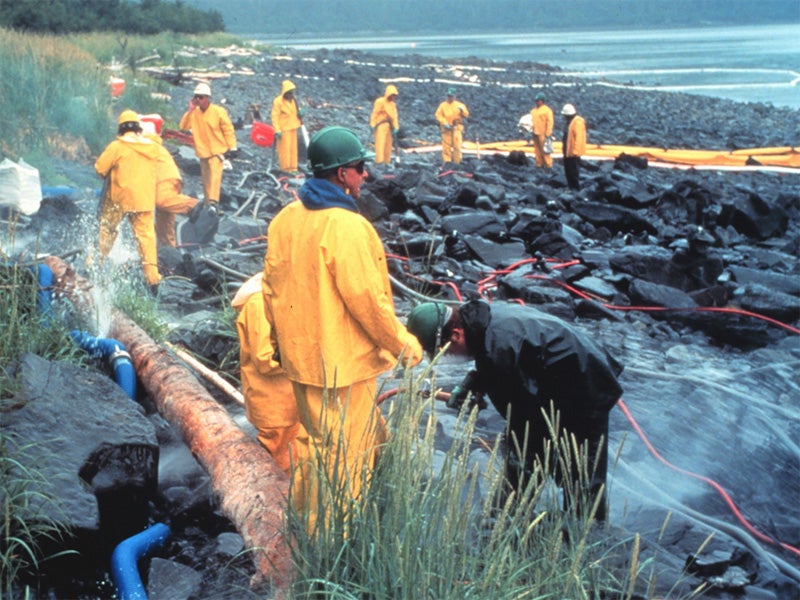Earthjustice stands with western Alaska tribes and families after severe storms devastated entire communities, displacing more than 1,000 residents just before winter. Learn more and how you can help.
The Risk of Disaster 25 Years Later
What we have learned (not much) since the Exxon Valdez oil spill.

This page was published 11 years ago. Find the latest on Earthjustice’s work.
Tragedy struck Prince William Sound in Alaska 25 years ago today when the Exxon Valdez ran aground, rupturing its hull and pouring nearly 11 million gallons of oil into the sound’s pristine waters.
The effects of that oil spill haunt the remote region to this day. Oil remains trapped between and under the boulders on beaches in the Gulf of Alaska. And thousands of gallons of Exxon Valdez oil lurk in beach sediments—still toxic and harmful to marine life.
Some 250,000 seabirds, nearly 3,000 sea otters, 300 harbor seals, 250 bald eagles and up to 22 killer whales were killed in the aftermath of the spill. Less than half of the monitored wildlife populations in the region are considered recovered to their pre-oil poisoning numbers.
In the Gulf of Mexico, coastal communities and marine ecosystems are still suffering the effects of BP’s oil well explosion on April 20 four years ago that released 210 million gallons of oil into gulf waters.
And yet, despite those two catastrophes, little has changed. Oil spill response technology has barely progressed because Big Oil has not committed to investing in the research and development needed to clean up the very possible disasters associated with oil and gas development in regions such as the Arctic and the Gulf of Mexico.
Mistakes like we saw from Shell Oil in 2012 show Big Oil isn’t ready for drilling in the Arctic. Shell has cancelled its foray into America’s Arctic seas for this year, but you can be sure Shell isn’t giving up, and the Department of Interior is right now considering next steps on offshore drilling in the Arctic.
How do we learn from these disasters and what can we do to avoid them? Earthjustice has worked to improve chemical dispersants and the way they are used to clean up a spill. We also challenged the approval of Lease Sale 193 that allowed offshore oil drilling in the Arctic. We recently won that case when the court ruled that the government did not adequately access the risks associated with offshore drilling in that area.
America’s Arctic Ocean is one of the harshest and most extreme climates in the world. We certainly can’t trust Shell in such a risky and pristine environment. We must learn from the environmental tragedies before us and stop risky and dangerous projects from moving forward.
As for the Exxon Valdez—after repairs and at least one more collision—in 2012 she was renamed “Oriental Nicety” and retired in India as scrap metal.
The nicety we need now is for the Obama administration to ensure protection of the Arctic’s sensitive ecosystem by keeping oil rigs out of the Arctic Ocean.
Opened in 1978, our Alaska regional office works to safeguard public lands, waters, and wildlife from destructive oil and gas drilling, mining, and logging, and to protect the region's marine and coastal ecosystems.